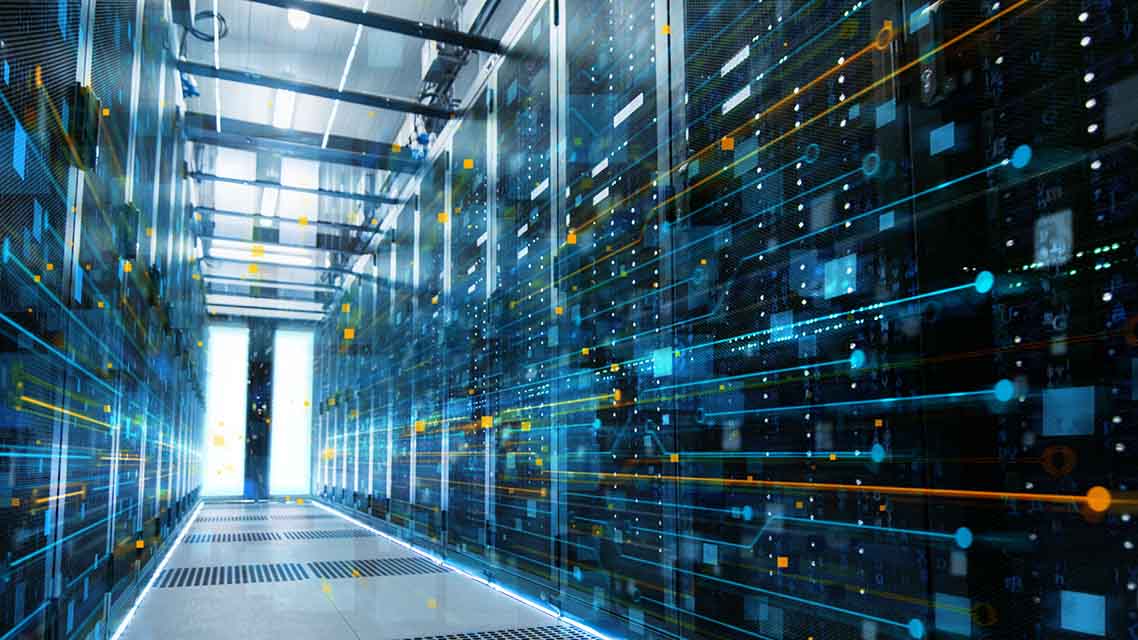
Understanding what a Software Defined Datacenter Is
A software-defined datacenter (SDDC)—also called a virtual datacenter—is a datacenter facility where all the IT infrastructure components, such as compute, networking, and storage, are virtualized and delivered to users as a service. An SDDC lets IT teams provision, configure, and manage physical IT infrastructure programmatically via software-defined templates and application programming interfaces (APIs).
In this post, we’ll explore why having an SDDC is essential, the components that make up the SDDC, the benefits offered, and how the cloud can help you transition toward a software-defined datacenter. We’ll also learn more about the SDDC benefits that Parallels® RAS provides for organizations.
Why Having a Software-Defined Datacenter Is So Important
To illustrate the value of SDDCs, let’s first consider a traditional datacenter. In such a datacenter, the organization’s IT infrastructure, including servers, storage, and networking, is hosted centrally in on-premises setups or the cloud.
In a traditional datacenter, you’re limited by the physical attributes of the available IT resources. Under such an environment, adding new resources can be time consuming and painstakingly complex because you have to perform IT operations manually. For example, if you need more capacity, you have to rack and stack the servers, connect several cables, and load multiple applications, including operating systems (OSs), databases, and web servers.
Unlike a traditional datacenter, an SDDC relies on virtualization technologies to abstract all the physical datacenter resources. This provides highly agile, cost-effective, scalable, and portable virtual compute, storage, networking, and security. Ultimately, this agility—which also impacts the business’s bottom line—is why organizations are increasingly embracing SDDC. Scaling the datacenter horizontally is easier with a software-defined datacenter.
According to MarketsandMarkets, the global SDDC market size is estimated to rise from $43.7 billion in 2020 to $120.3 billion by 2025, representing a compound annual growth rate (CAGR) of 22.4% during the projection period. This growth is mainly due to the advent of multi-cloud strategies and the need to enhance infrastructure resiliency and service uptime.
Which Components Make up a Software-Defined Datacenter
Four essential architectural components are included in an SDDC: server virtualization, software-defined networking, software-defined storage, and unified datacenter management software. Each one is important and requires a detailed explanation.
Server Virtualization
Server virtualization—also called compute virtualization—abstracts the server resources (including the processor and memory) from the physical hardware, creating resource pools for use wherever required. It adds a layer of software, called a hypervisor, to the server, which abstracts the underlying physical hardware from all the applications that run above it.
The hypervisor creates and manages the underlying computer’s virtualized resources, deploying the resources into logical instances—also called virtual machines (VMs)—with each capable of acting as an independent server. Since many VMs run simultaneously on a single physical hardware, server virtualization minimizes server counts and eases the strain on the physical datacenter facilities. It also improves flexibility while lowering the total cost of IT for the organization.
Software-Defined Networking
Software-defined networking (SDN) is a networking model that relies on software-based controllers and APIs to communicate with underlying physical network infrastructure and direct traffic on a network. This model contrasts with traditional networks that use dedicated hardware devices such as switches and routers to control and direct network traffic.
An SDN framework also differs from network virtualization. For example, network virtualization can allow you to segment different virtual networks within a single physical network. You can leverage network virtualization to create a single virtual network by connecting devices on different physical networks.
SDN, however, allows you to create and control a virtual network or traditional network infrastructure via software. For example, in an SDN model, you can shape network traffic from a centralized controller without ever touching switches or routers.
Software-Defined Storage
Software-defined storage (SDS) is a storage architecture that abstracts the storage resources from its underlying physical hardware. Unlike traditional storage area networks (SANs) or network-attached storage (NAS) that consolidates storage in one place, SDS relies on software to provision and manage data storage independent of the underlying hardware type, model, or age.
Abstracting the storage resources from its underlying hardware allows you to scale the virtual storage capacity as you deem fit, whenever you see fit, rather than scrambling to add another proprietary piece of hardware. You can also leverage SDS to upgrade or downgrade the hardware whenever you want.
SDS is part of a larger hyper-converged infrastructure (HCI) ecosystem where all IT resources are decoupled from the physical hardware. This division allows you to select the hardware to purchase and the storage capacity you need for the organization’s workloads.
Unified Datacenter Management Software
A fully virtualized datacenter requires management software to automate and manage its operations. A centralized management platform allows you to provision, configure, and manage all the workloads across different geographies and heterogeneous infrastructures from a single console.
How a Software-Defined Datacenter Can Bring Benefits
Some of the notable benefits of a virtual datacenter are that it can:
- Streamline datacenter management. IT administrators can manage the SDDC easily via a single console. For example, they can quickly view the datacenter’s inventory and servers’ health status and control all the IT facilities via intelligent software.
- Provide automation and orchestration capabilities. Instead of hurdling through complex IT operations, as is the case with traditional datacenters, an SDDC can enhance any workflow via intelligent software. This is because the software is more efficient and reliable than humans, allowing more flexibility and agility in SDDCs compared to legacy datacenters.
- Minimize IT costs. By leveraging composable infrastructure within an SDDC, you can easily pool resources for any workload. This can allow you to eliminate silos and overprovisioning resources while utilizing software-defined intelligence to achieve accelerated time-to-value.
- Enable cloud agility in on-premises setups. An SDDC provides the best benefits of cloud-based services in on-premises settings by abstracting IT resources from the underlying hardware and automating their operations via software. As such, it serves as a more accessible version of a private cloud, with a hybrid cloud serving as an extension.
How the Cloud Can Accelerate the Move to a Software-Defined Datacenter
Virtualizing all the layers of the IT infrastructure, such as compute, storage, and networking, will likely require IT teams to change all the existing workflows and processes in the organization. In addition, IT administrators can also encounter difficulties as they prepare and manage new computing environments in the cloud and SDDC.
Adopting a cloud-based SDDC approach where IT administrators employ familiar tools can help to address such challenges. Implementing a cloud-based SDDC, for example, could reduce the time and risks associated with re-architecting the existing IT infrastructure. Similarly, you could also eliminate the time it takes to install those tools in an on-premises IT infrastructure.
A cloud-based SDDC can also help you to manage costs by avoiding the purchase of expensive physical infrastructure. For example, you could leverage the existing IT infrastructure in a hybrid cloud by using the cloud to expand resources without purchasing and deploying more physical systems. Alternatively, you could create a new cloud-based environment and eliminate all the capital expenditures (CapEx).
Most importantly, tapping into a cloud-based SDDC approach allows you to flexibly scale up capacity while accessing the latest technologies without constantly upgrading existing physical systems. You could use such an environment to deliver sufficient capacity that supports data growth while providing exceptional throughput.
Use Parallels RAS to Integrate Public and Private Cloud through an SDDC
The need for improved agility and reduced management burden drives organizations to consider cloud-based services and an SDDC to respond quickly to evolving business requirements and better utilize IT resources. However, migrating or extending on-premises IT infrastructures to the cloud can be time-consuming and risky for the organization.
If you are considering combining private and public clouds via an SDDC to create a truly hybrid environment, Parallels RAS is the solution. Parallels RAS creates a common orchestration, management, and security architecture for virtual desktop infrastructure (VDI) that allows organizations to deliver workloads to their employees seamlessly, scalable, and securely.
It also supports both VMware and VMware vCenter, allowing users to access the underlying SDDC resources directly and IT administrators to manage corporate resources from a single pane of glass. Parallels RAS can also allow IT teams to manage VMs from multiple hypervisors inside the same SDDC.
Try out Parallels RAS today, and see how it integrates public and private clouds seamlessly through an SDDC!

